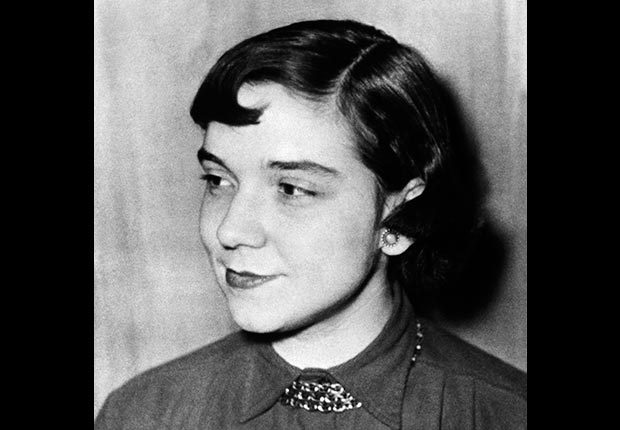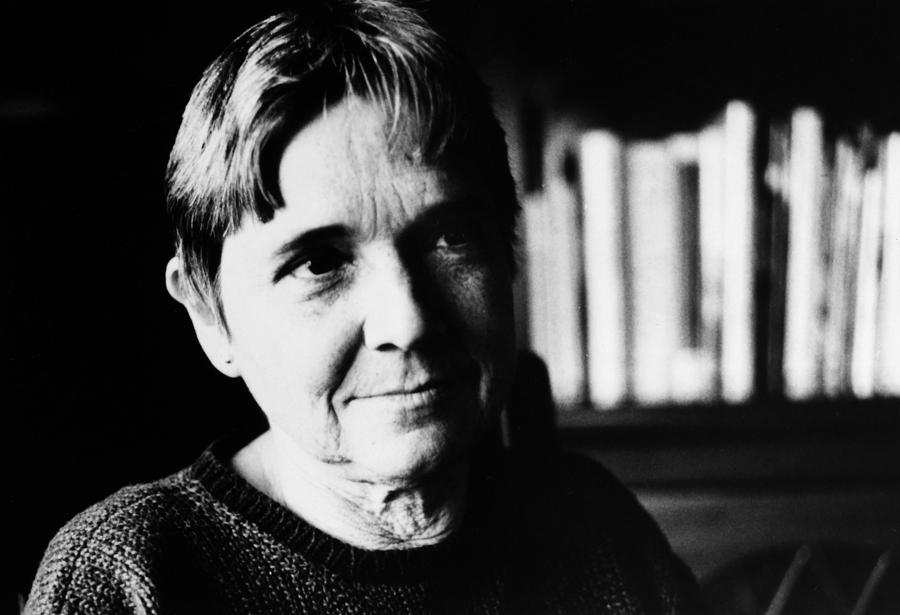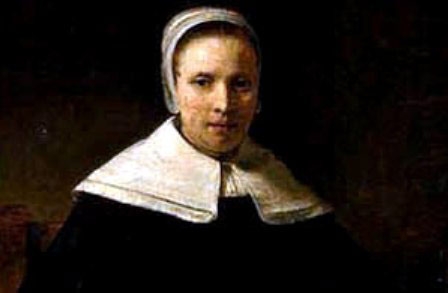Anne Bradstreet- Anne Bradstreet was born in 1612 in Northamptonshire. Post marriage at 16, she and her entire family moved to Ipswich, Massachusetts, where she raised eight children with her husband. She pioneered English verse in the American colonies, and many of her works were later published in England. Her poetry later invited critical appraisal for being deeply emotional, and poet John Berryman also dedicated his piece “Homage to Mistress Bradstreet” to her.
The Author to Her Book- “The Author To Her Book” is an introspective poem about a poet and her feelings about her work. It reflects a female artist’s dilemma regarding the quality of her creation and also narrates the story of how her friends support her work and get it published without her permission later. This in turn is seen as both stealth and help and the poet describes her psychological state as a writer, who naturally finds a lot of flaws in her own text. The poem is an imagery of birth and motherhood told through a new piece of writing and then editing it. The poet remains confident of her work while dealing with its imperfections, but begins to feel sceptical about her work when it is out for the world to perceive.
Setting of The Author to Her Book-
The poem does not lead the readers to any specific setting, but does portray the image of a poet in her house, secluded in her own comfort, trying to review her writing. Anne Bradstreet was based in Massachusetts when she wrote “The Author To Her Book”. The poem is set in the religious 1640’s, with Bradstreet being a part of the small Puritan community and her later poems also mention the influence of God, art and religion in those times. As a mother of eight, she also played a role in supporting her husband’s and her own family, which is evidence of her being a strong female character, also seen where she says her book only has a mother. As a poet she treasured her writings and believed in them, but did bother about editing and reviewing them a number of times. She held her writing close and did not trust the common world perception to interpret it in an apt manner.
Poetic Devices in The Author to Her Book-
The poem is an extended metaphor on perceiving the book as a child in a transient world of poverty and uncertainty inviting a dire need for perfection and appropriate perception.
Metaphor:
“ill-formed off-spring” – the book as an unpolished child
“rambling brat” – the ramble of the work spanning two continents and the vague form of writing in the book
“I cast thee by” – an attempt to disown the book
“amend its blemishes” – correct its faults in writing
“better dress” – a mother considering her options while dressing her child
“say thou hadst none” – the book, or the ‘child’ being the poet’s, or the ‘mother’’s independent creation
“critic’s hands” – open to critical receipt
“thy Mother” – the mother of her creation i. e. her book
“poor” – the poet’s financial condition and her perception of her writing abilities
“home-spun cloth” – the language in which the poem was written, in a boring and narrative style
Symbolism – the book as a ‘child’, with a ‘mother’, without a ‘father’
Personification/Apostrophe (a novice version of Personification) – the description of a non-living thing (a book) as a living creature (a child)
Imagery – birth of a child told through the birth of a literary creation.
Style-
The poem moves in an ABAB rhyme scheme and maintains the form of heroic couplets in an iambic pentameter.
Summary of The Author to Her Book-
The poem “The Author To Her Book” opens with an imagery of a child being born, which portrays the infant nature of authorship. The author perceives her work as juvenile and extremely imperfect, though exclusively her own. The first part of the poem presents the author’s work to the readers as what she perceives it. It calls her work an infant and faulty piece in need of revision to remove its defects and ease its reception in the world outside. The second part of the poem brings the revised side of the author’s creation. She says she will mould her writing and provide it with new ‘clothes’ to make her anew and better. However, her poverty in both creativity and finance, as mentioned in the poem, is an obstacle to this reinvention and she thus agrees to let her work out to get rid of this poverty, which contradicts her earlier statements.
The poem speaks of an ill-formed off-spring created by the ‘weak’ brain of the poet that stuck to her side before her friends (in real, her brother-in-law) snatched it from her to present it to the outer world. The book was in rags and acutely imperfect, as she realises on the rejection of the book by a publisher and a lot of flaws now mentioned publicly, coming back to the author. She further says she is really unequipped to correct her own creation and shall try her best to mould the book again into a perfect version of itself by ‘dressing it in new clothes’ like a mother moulds her child. She warns her work to go into critic’s hands and be subject to harsh criticism. She declares the book to be her independent creation, and thus one with no father and a mother, and renders herself poor and unable to provide for a reinvented version of the book. She finally lets her work out for the world to see to gain profit from her creation, hereby acting against her own beliefs.
Critical Analysis of The Author to Her Book-
The poem “The Author To Her Book” is a complex poem revealing the psychology of a female writer in a 17th century Elizabethan literary era. The poet is an independent female creator of her work, and would prefer her verses to remain with her, not on display for the outer world to see. She believes a public portrayal of her work lessens its personal attachment to the author and is a form of snatching the work away from the creator. In a period of religious orthodoxy, Anne Bradstreet writes about her work being her ‘child’ and she being its sole parent. She takes care not to allot a gender to her ‘child’ and is focused on moulding and re-moulding it into newer and better versions.
After her friends (referring to her brother-in-law who took her work to get it published without her notice) take her book away from her and she faces rejection from the publishers, her previous claims about her mind being a weak creator and her book having a lot of flaws in dire need of correction are carried forward as she feels her writing is entirely imperfect and fears the world perceiving it in an improper manner. She attempts to reinvent her book like a mother dresses her child in new attire, and brings in another side to her personal life, her poverty and inability to present her work as a revised, better one. This brings the readers close to the end of the poem which serves as a critical closure of her own statements. Due to her poverty, the author decides to let her book go out in the world to benefit from it both in terms of money and ideas and hereby goes against her own judgement of creative publicity.
The poem was received as a deeply personal account of what goes on in a writer’s mind when it was published. It came across as an introspective poem about constant revision of one’s own creation and how close it remains to the creator throughout. It also spoke of the fear instilled in all artists regarding the judgement of their work by the world outside. This in turn affects the artists enough to negatively perceive themselves and their abilities and engage in enough remodelling of a single piece of creation. The major critical turn the poem takes would be the poet’s changed opinion on having her book published while previously scrutinising such actions.
Central Idea of The Author to Her Book-
The central idea of the poem is the birth of a creative piece of writing and the extensive process of judging, reviewing and editing it. Along with this revision, the idea of birth incorporates the attachment of the author to her writings and thus, her protecting it from the outer world. This is the theme of the poem that narrates the procedure of a writer dealing with different perceptions and reception of her creativity and her attempt to protect and preserve it for herself, no matter how imperfect it might be.
Tone of The Author to Her Book-
The poem has an underlying negative tone throughout the verses as the poet is constantly critical of whatever her creation has gone through. She even goes to the extent of perceiving her own creativity as negligent and unimportant, saying her mind is a ‘feeble’ one, incapable of perfecting her written performance. She is skeptical of presenting her book to the world outside and thinks it decreases its attachment to the author. Though she attempts a lot of revised versions of her writing, she maintains its imperfection and her apparent lack of creativity, ultimately surrendering to strangers receiving and reviewing her work, but not without using her financial and creative poverty as an excuse. The tone of the poem also entwines possession with a dubious mood and holds the author’s work, however she may declare it to be, close to herself and as her own.
Conclusion- Anne Bradstreet’s poem “The Author To Her Book” is based on a real-life incident where her brother-in-law went to get her work printed and did not inform her about it. The poet is against this ‘impersonal’ idea of publicising creative writing and says it snatches the piece from the creator of it. She considers all the blemishes and faults her writing has and tries to modify it to present a better version. She then points out her creative and monetary poverty and lets her work finally go to the world. The poem is conclusively an insight into a writer’s mind and her possessive feelings about her creative work.
Some online learning platforms provide certifications, while others are designed to simply grow your skills in your personal and professional life. Including Masterclass and Coursera, here are our recommendations for the best online learning platforms you can sign up for today.
The 7 Best Online Learning Platforms of 2022
- Best Overall: Coursera
- Best for Niche Topics: Udemy
- Best for Creative Fields: Skillshare
- Best for Celebrity Lessons: MasterClass
- Best for STEM: EdX
- Best for Career Building: Udacity
- Best for Data Learning: Pluralsight













It’s remarkable in favor of me to have a web site, which is useful in favor of my know-how.
thanks admin